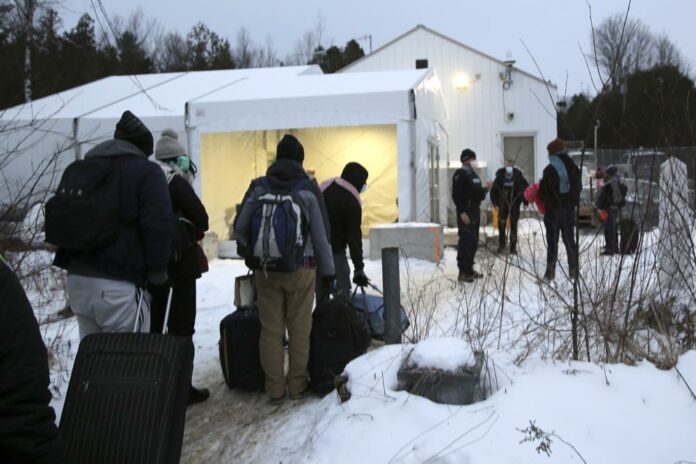When a bus arrives at the Greyhound terminal in Plattsburgh, New York, a small group of taxi drivers waits to transport passengers to a snowy, dead-end dirt road.
There, near the Canadian border, migrants clamber out of cabs or vans several times a day, and Royal Canadian Mounted Police officials warn them that if they cross, they will be arrested for unlawful entry. Most are quickly released to seek asylum, where they can live and work freely while waiting for a judgment.
Following a 20-month moratorium on asylum requests aimed at preventing the spread of COVID-19, Cortez has joined a new influx of refugees seeking safety in Canada. Families are once again dragging suitcases and carrying children to the border across a lonely, snow-covered ditch.
The Canadian decision to withdraw the ban on Nov. 21 contrasts sharply with the US approach, where the Centers for Disease Control and Prevention has prolonged an identical restriction on the border with Mexico indefinitely, which will enter its third year in March.
On Wednesday, a Justice Department lawyer fought back against questions from federal appeals court justices regarding the scientific basis for such sweeping anti-asylum legislation.








